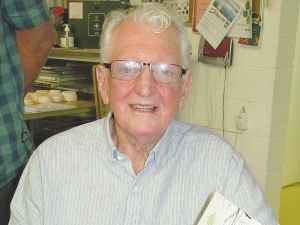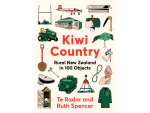The golden age of orcharding in West Auckland was recently celebrated at the launch of a book which tells the story of its rise, then retreat in the face of industry change and urban expansion.
Chris Smellie, a former orchardist himself, has worked on the book Where Have All the Apples Gone? since 2019, interviewing 17 past and present orchardists.
"Sixty percent of the book is devoted to them and each story is quite individual," he said.
But he also delves into industry matters consuming orchardists around the country.
"The discussion which went on and on was export marketing and whether to do that individually or collectively," he said.
"That caused a lot of anxiety amongst growers. And in 1984, the Labour government added fire to the whole thing."
Former Waitakere mayor, Sir Bob Harvey, recounted his connection with the area which involved being sent out in a Morris Minor to sell fruit for sale ads on page 2 of the Saturday edition of the New Zealand Herald. From here he moved in to touring fruit growers' conferences promoting Turners and Growers' Fresh Tastes Best advertising slogan.
"This book is just wonderful," Harvey said.
"It's about life, about us and the lives of those who have gone."
The book traces early land sales in the area from the 1860s by Ngati Whatua to early settlers. Then after the first shipment of apples and pears was sent from New Zealand to the United Kingdom in 1899 orchards were established in Nelson, Hawke's Bay and Auckland.
In 1914 the Northern Fruitlands Company was set up by 25 shareholders who were mainly Auckland professionals as well as a few farmers. Ten thousand pounds sterling was raised to buy and subdivide 5000 acres of land between Waimauku and Kumeu North into blocks between 10 and 40 acres, known as Huapai Estate – Auckland’s Suburban Fruit Colony. The result was over 100,000 fruit trees planted on 3000 acres in just five years.
The Huapai Fruitgrowers Cooperative Association was formed with many of its member growers coming from Dalmatia. They were given free advice from Department of Agriculture advisers and New Zealand Fruitgrowers Federation (NZFF) field officers. The federation, with the aim of fostering, promoting and protecting the fruit industry, was set up in 1916 after the Orchard Tax Act was passed. It was funded by an initial levy of one shilling for every acre of fruit trees planted, with later increases going towards research work. Following the lead of the Dairy Board, the Apple and Pear Board (NZAPB) was established in 1948 after wartime fruit subsidies were removed.
But local market control saw limits on how much customers could buy at the orchard gate or pre-order from growers. Direct sales to retailers were illegal, particularly upsetting to Kumeu growers so close to the large Auckland market. With Labour’s election in 1984 the NZAPB was firmly told that if the local market wasn’t deregulated it would do it anyway.
And four years later the National government announced the board would become a new company, ENZA, to be the main pip fruit exporter with shares, only tradeable amongst growers, issued to them.
Where Have All the Apples Gone? $49.50 – kumeuarts.org


















